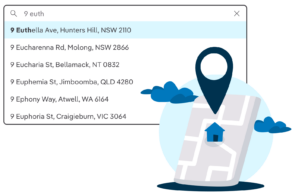What’s right for you?
There are a few key differences between consuming data via an application programming interface (API) and via a data file. Both have their advantages; however we’ve outlined a few key differences for you to consider.
Key differences
The primary difference between our APIs and data extracts service is the way the data is delivered. An API allows for real-time data access, meaning that whenever a request is made, the API will return the most up-to-date data available into the systems or products that you need. In contrast, a data extracts file is typically a pre-generated file containing a fixed set of property, market or behavioral data. This means that the data in a file may not be as up-to-date as the data available through an API.
Another important difference is the amount of data that can be accessed. APIs can sometimes have limits on the amount of data that can be accessed in a given period of time. This is known as the API’s rate limit. On the other hand, data extract files can potentially contain a large amount of data, depending on what you need and the size of the file.
Another key difference is the level of control over the data. With an API, the user has the ability to specify exactly what data they want to access and how they want it to be formatted. This allows for a high degree of customisation and flexibility. With a flat file, the data is typically structured in a predetermined way, so there is less control over the specific data that is accessed, although we can tailor a file to have only the categories you are interested in.
Use cases
There different use cases for using one of our APIs to retrieve data. Some common examples include:
- Integration with other software applications: An API can be used to retrieve data from one software application and use it in another. For example, a website that displays property market information may use an API to retrieve market data from PropTrack and display it on the website.
- Mobile apps: Mobile apps often use APIs to retrieve real-time data and display it in the app. For example, a mapping app might use an API to retrieve address data and prefill this information in the app.
- Data analysis and visualization: APIs can be used to retrieve data for analysis and visualisation. For example, a data scientist might use an API to retrieve data from a database straight into their analysis tools and build graphs to gain other insights.
- Automating tasks: APIs can also be used to automate tasks that involve data retrieval and processing. For example, a financial analysis tool might use an API to retrieve property data and generate reports automatically.

Alternatively, there are some advantages to using a pre-generated data extract file, these include:
- Analysing large amounts of data: Flat files can be useful for processing large amounts of data that cannot be easily handled using an API. For example, a flat file could be used to extract data in a more manageable format, or to perform a series of calculations or analysis on a large dataset to produce unique findings.
- No technical requirements: In addition, you may not have or need a software application to use the data you are after. In this instance, you require less technical or development knowledge, and just require the data in an easily accessible format.
Pros & cons
Here are some pros and cons of using a data extracts file versus an API for consuming data:
API
Pros:
- Allows for real-time data access
- Provides access to data without having to download or store the data
- High degree of control over the data, allowing for custom requests and formatting
- Can be more efficient for real-time data needs
- Integrate straight into your software, application or analysis tools
Cons:
- Subject to rate limits, limiting the amount of data that can be accessed
- May require more technical knowledge to use and integrate with other systems
- Data may be more complex and require more processing to be usable
Data extracts
Pros:
- Delivered in a flat file for those with limited software needs (E.G CSV)
- Can potentially contain a large amount of data
- Easy to use and access, requiring only a file reader
- Data is structured in a predetermined way, making it easy to parse and process
Cons:
- Data may not be as up-to-date as data available through an API
- Limited control over the specific data that is accessed
- May be less efficient for real-time data needs and involve more manual processing
So what should you choose?
Overall, the choice between consuming data via an API or via a flat file will depend on the specific needs of the user. APIs offer real-time data access and would be suitable for applications that need the most up to date data at any given time.
Flat files, on the other hand, offer a large amount of data but may not be as up-to-date but is easily accessible.

Learn more
